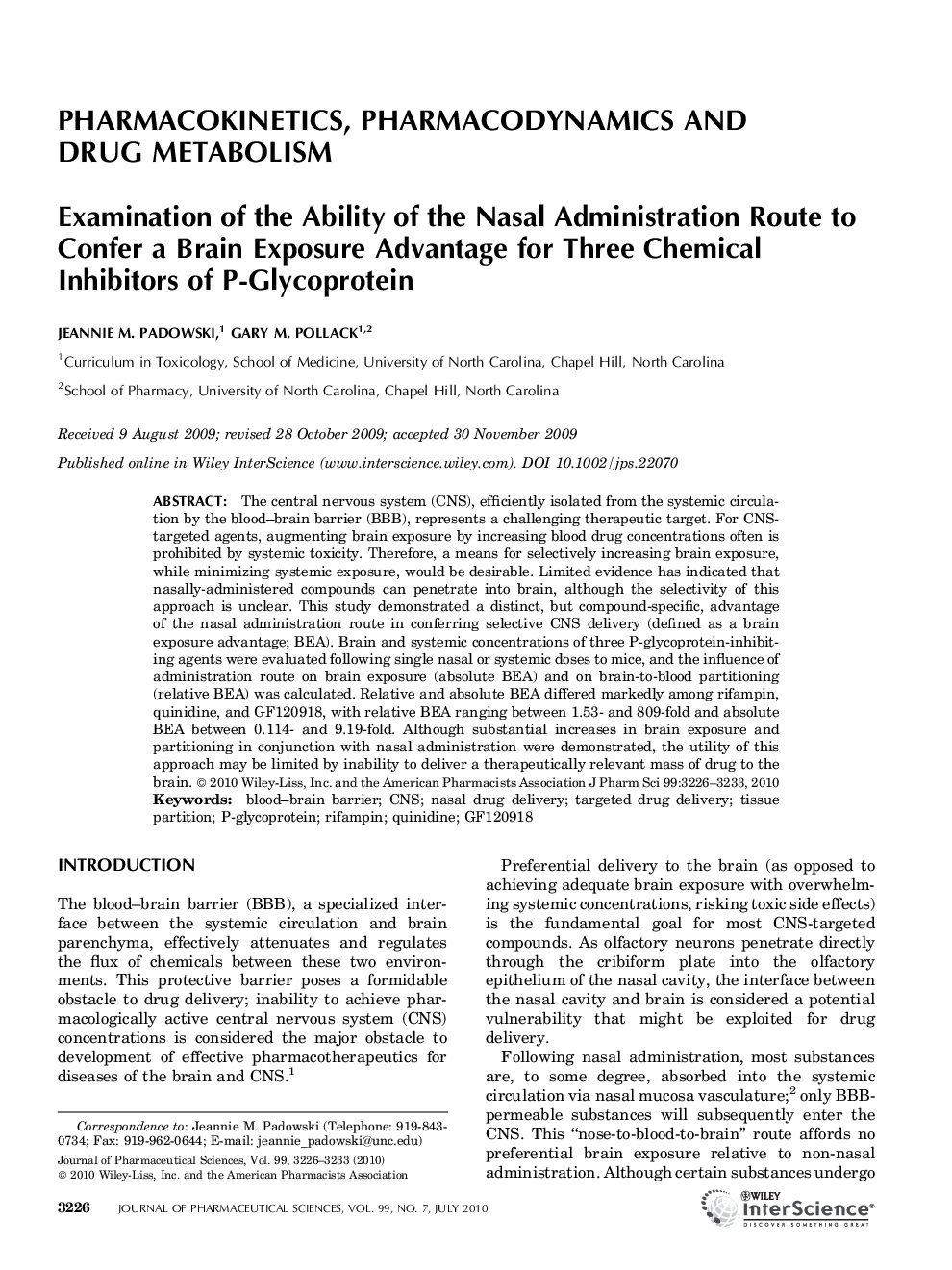| Article ID | Journal | Published Year | Pages | File Type |
|---|---|---|---|---|
| 2486286 | Journal of Pharmaceutical Sciences | 2010 | 8 Pages |
Abstract
The central nervous system (CNS), efficiently isolated from the systemic circulation by the blood-brain barrier (BBB), represents a challenging therapeutic target. For CNS-targeted agents, augmenting brain exposure by increasing blood drug concentrations often is prohibited by systemic toxicity. Therefore, a means for selectively increasing brain exposure, while minimizing systemic exposure, would be desirable. Limited evidence has indicated that nasally-administered compounds can penetrate into brain, although the selectivity of this approach is unclear. This study demonstrated a distinct, but compound-specific, advantage of the nasal administration route in conferring selective CNS delivery (defined as a brain exposure advantage; BEA). Brain and systemic concentrations of three P-glycoprotein-inhibiting agents were evaluated following single nasal or systemic doses to mice, and the influence of administration route on brain exposure (absolute BEA) and on brain-to-blood partitioning (relative BEA) was calculated. Relative and absolute BEA differed markedly among rifampin, quinidine, and GF120918, with relative BEA ranging between 1.53-and 809-fold and absolute BEA between 0.114- and 9.19-fold. Although substantial increases in brain exposure and partitioning in conjunction with nasal administration were demonstrated, the utility of this approach may be limited by inability to deliver a therapeutically relevant mass of drug to the brain. © 2010 Wiley-Liss, Inc. and the American Pharmacists Association J Pharm Sci 99:3226-3233, 2010.
Keywords
Related Topics
Health Sciences
Pharmacology, Toxicology and Pharmaceutical Science
Drug Discovery
Authors
Jeannie M. Padowski, Gary M. Pollack,
